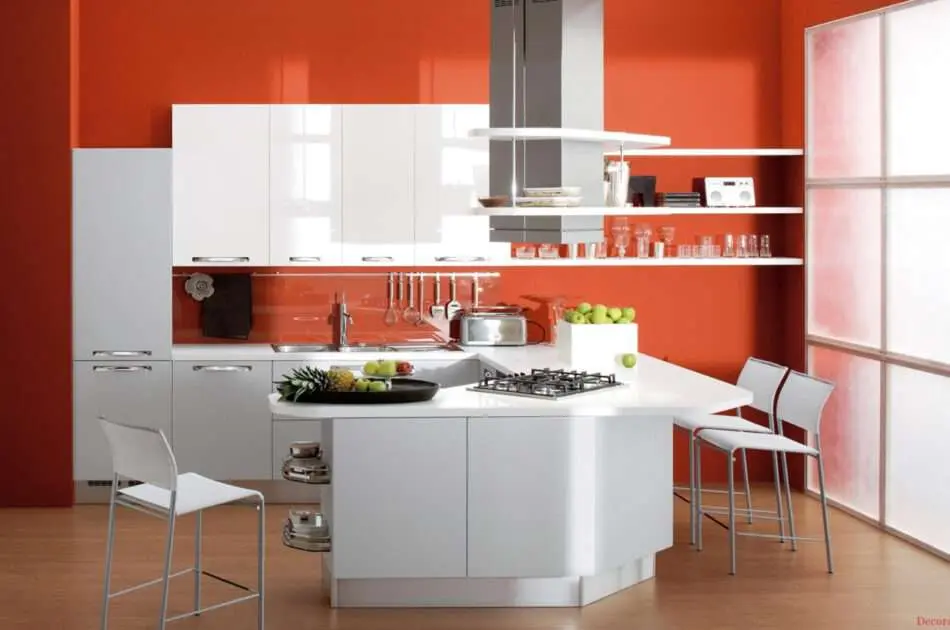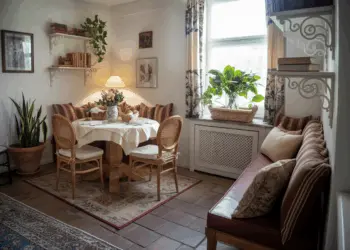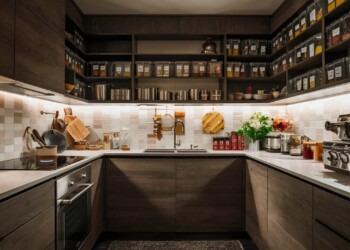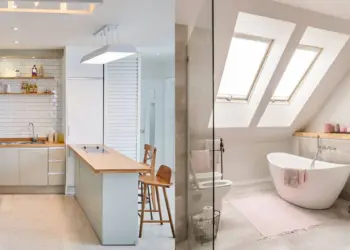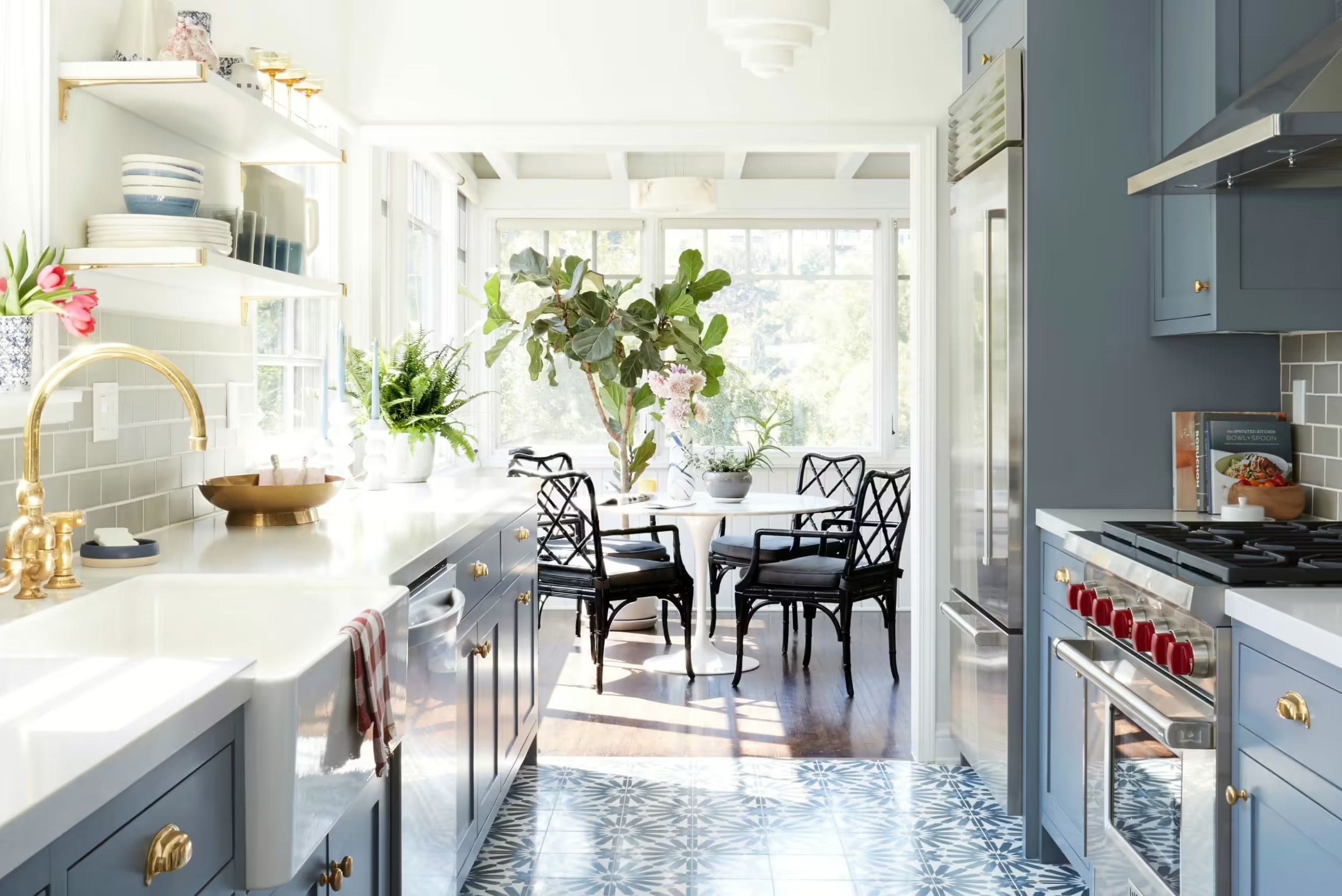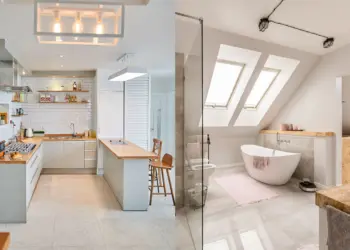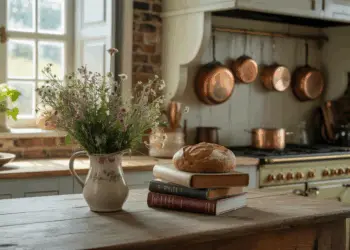When it comes to designing your kitchen, one of the most crucial decisions you’ll make is choosing the kitchen colour combination for your wall paint and kitchen cabinets. This seemingly small choice can have a significant impact on the overall look and feel of your kitchen.
In this article, we will explore the art of selecting the perfect color combination that not only enhances the aesthetics but also creates a harmonious and inviting atmosphere.
Table of Contents
Understanding Color Psychology
Before diving into specific color combinations, it’s essential to understand the basics of color psychology. Different colors evoke various emotions and moods. Here’s a brief overview:
Warm Colors for your kitchen colour combination
Warm colors like reds, oranges, and yellows are known for their energetic and inviting qualities. They can stimulate conversation and create a vibrant atmosphere.
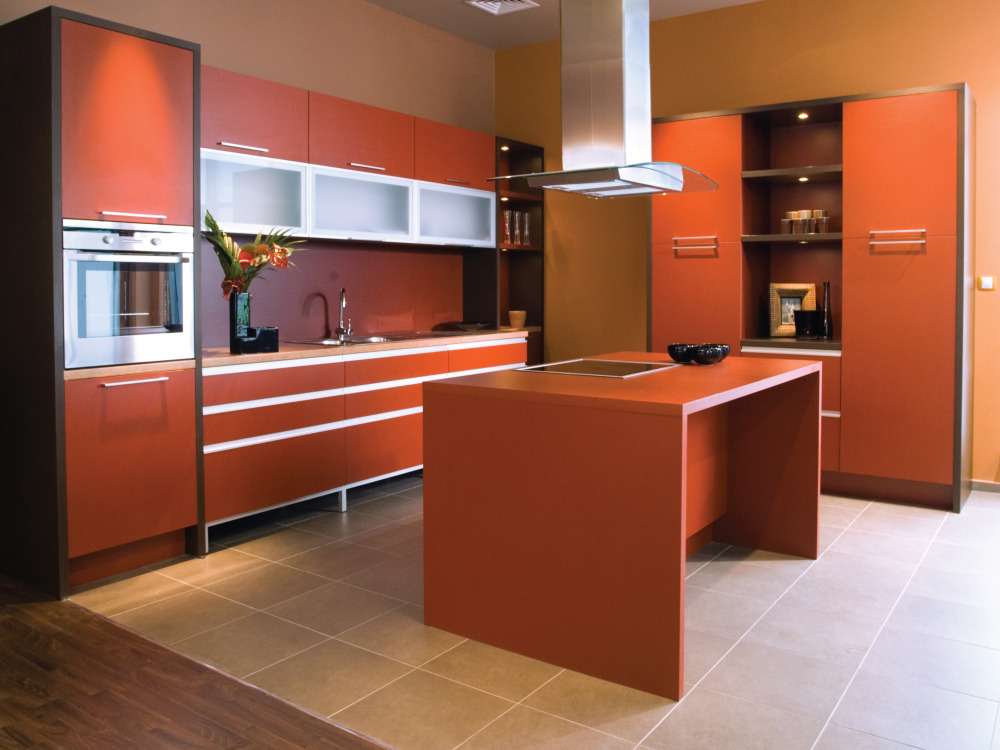
Cool Colors for your kitchen colour combination
Cool colors such as blues, greens, and purples have a calming effect. They promote relaxation and can make a space feel more spacious.

Finding the Perfect Balance
The key to a successful color combination lies in finding the perfect balance between warm and cool tones. Let’s explore some popular choices:
Classic White and Wood for your kitchen colour combination
Combining white wall paint with wooden cabinets is a timeless choice. The crispness of white complements the warmth of wood, creating a welcoming and timeless kitchen.
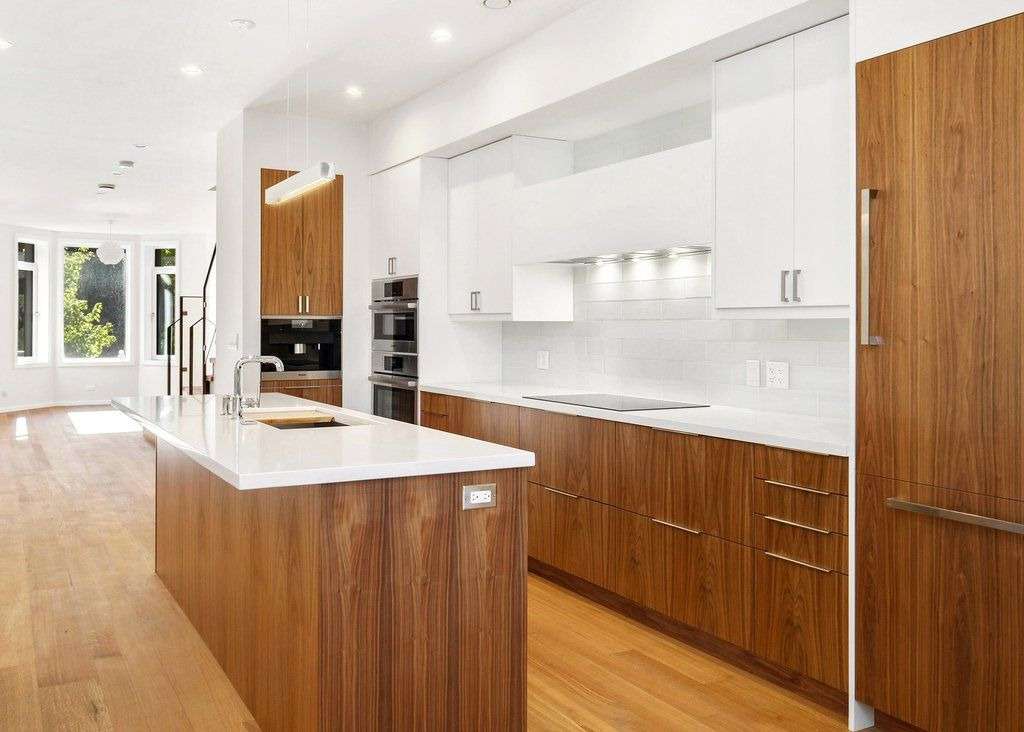
Bold Contrasts for your kitchen colour combination
For those seeking a more dramatic look, consider pairing deep navy blue cabinets with a pale gray or beige wall paint. This high-contrast combination adds depth and character to your kitchen.
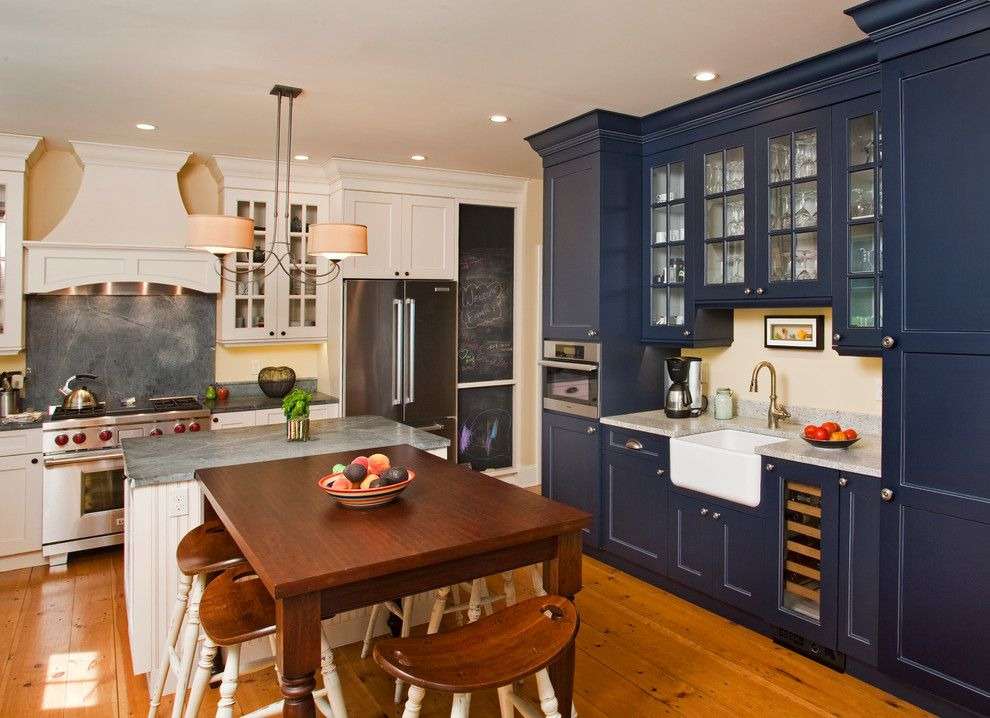
Earthy Tones for your kitchen colour combination
Earthy tones like olive green cabinets with a terracotta-inspired wall paint can bring a sense of nature indoors. This combination is ideal for those who want a cozy and rustic ambiance.
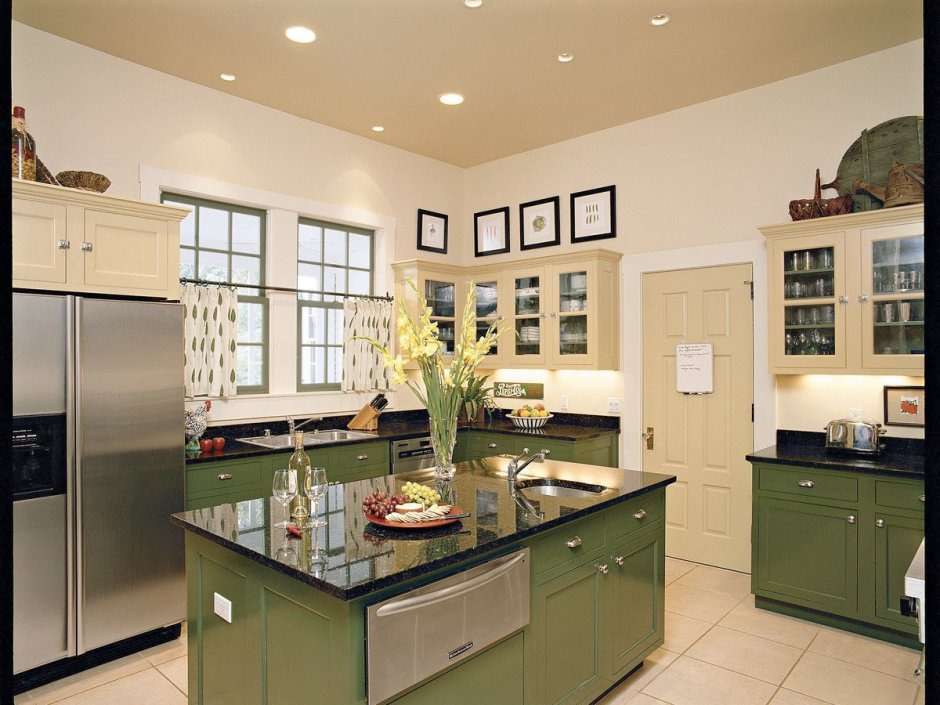
Monochromatic Elegance for your kitchen colour combination
If you prefer a minimalist approach, opt for a monochromatic palette. A slightly darker gray cabinets with light gray wall paint for an elegant and sophisticated kitchen.

Lighting Considerations before selecting your kitchen colour combination
When choosing your color combination, it’s crucial to consider the lighting in your kitchen. Natural light can affect how colors appear throughout the day. Always test your chosen colors in different lighting conditions before making a final decision.
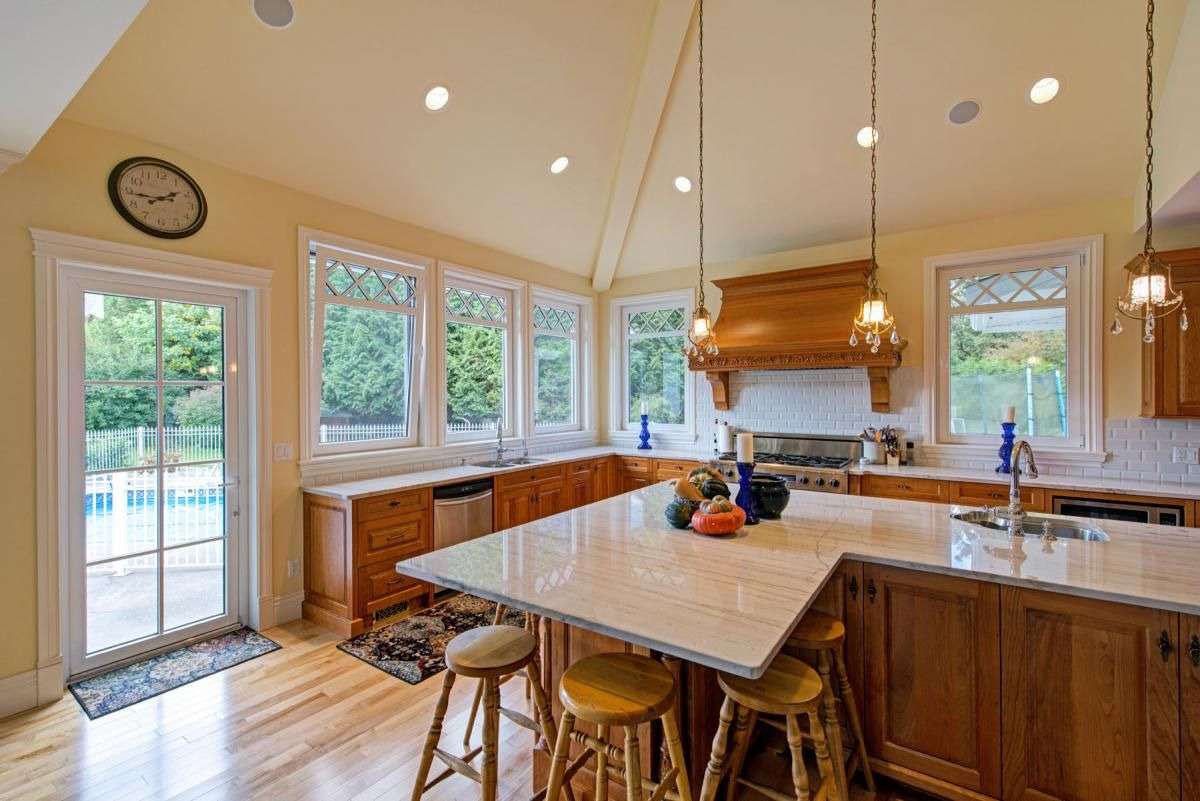
Tips for Making the Right kitchen colour combination
Here are some additional tips to help you make the right decision:
Sample Swatches
Before committing to a color combination, obtain sample swatches and place them in your kitchen. This will allow you to see how the colors interact in your specific space.
Consult a Professional
If you’re uncertain about your choices, consider consulting an interior designer or color expert. Their expertise can help you make an informed decision.
Consider Your Personal Style
Your kitchen should reflect your personal style and preferences. Choose colors that resonate with you and create a space where you feel comfortable.
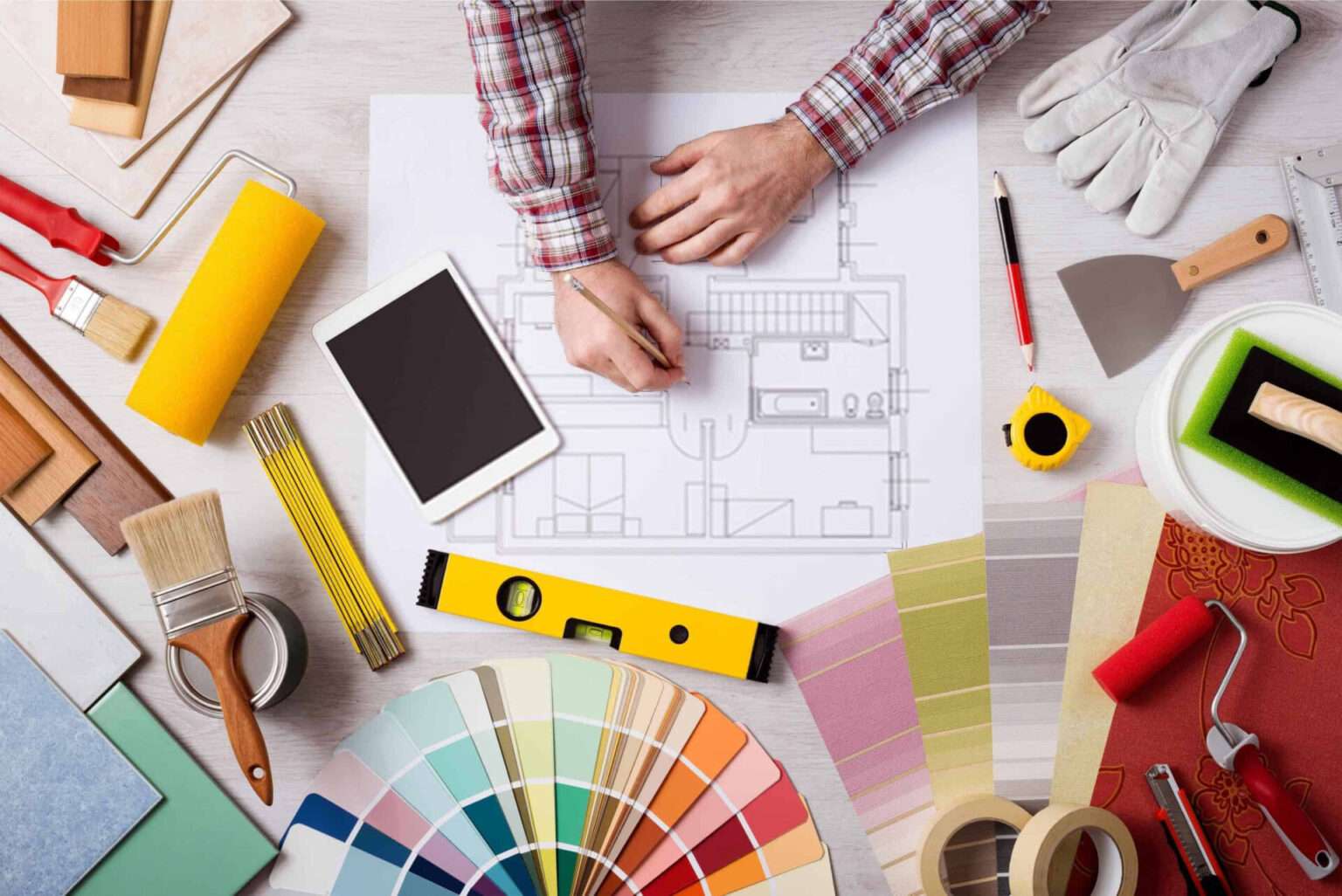
Exploring Accents and Details
Adding Personality with Accents
In addition to your primary color scheme, consider incorporating accent colors. These are small touches that can truly make your kitchen stand out. For example, you can introduce vibrant colors through kitchen appliances, utensils, or even decorative tiles as a backsplash. These accents can inject personality and a sense of fun into your kitchen.
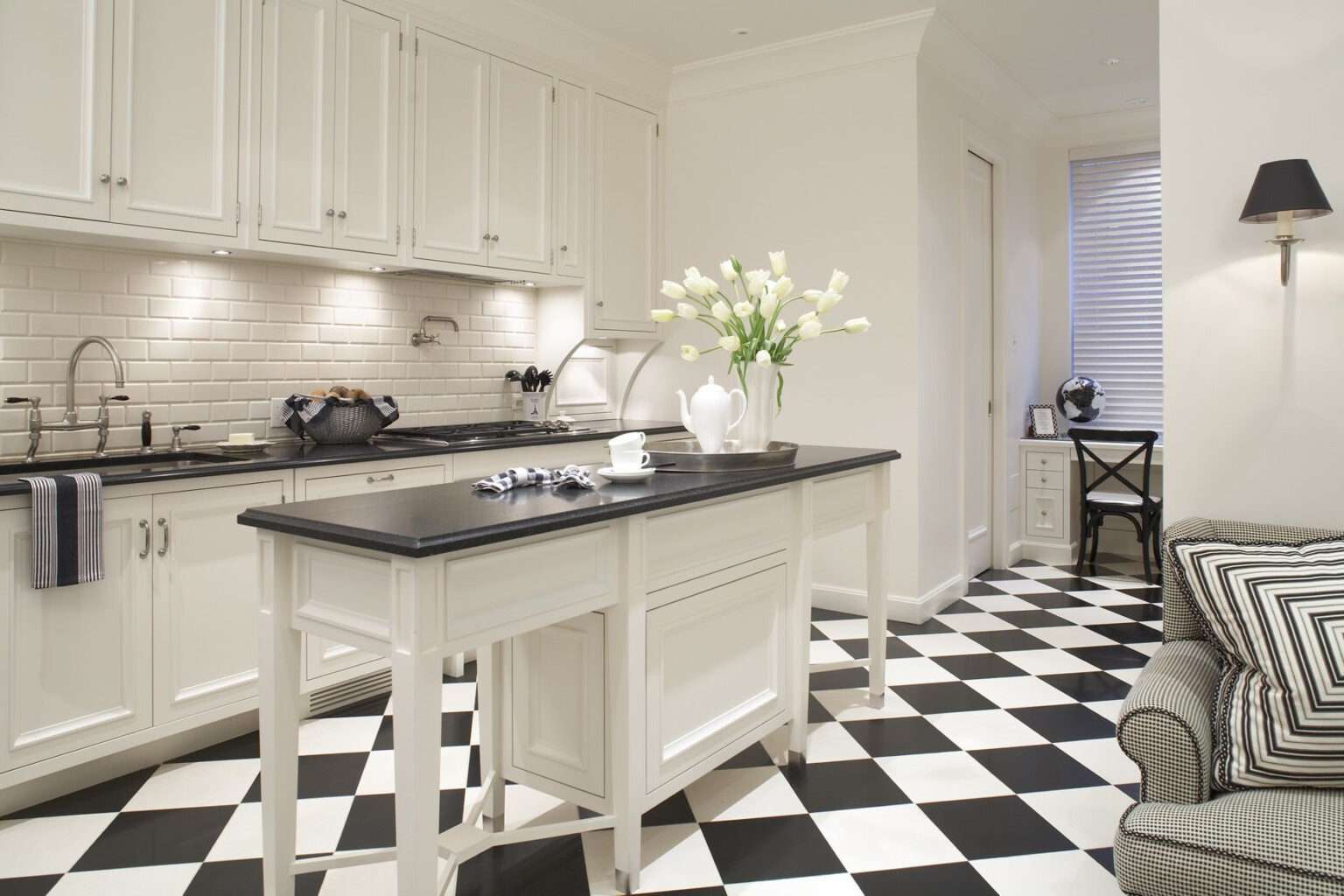
Creating Visual Interest with Textures
Another aspect to consider is texture. Combining different textures can add depth and dimension to your kitchen’s color palette. For instance, pairing glossy cabinets with a matte-finish wall paint can create a visually appealing contrast. Experiment with different materials like glass, metal, and stone to introduce textural variety.
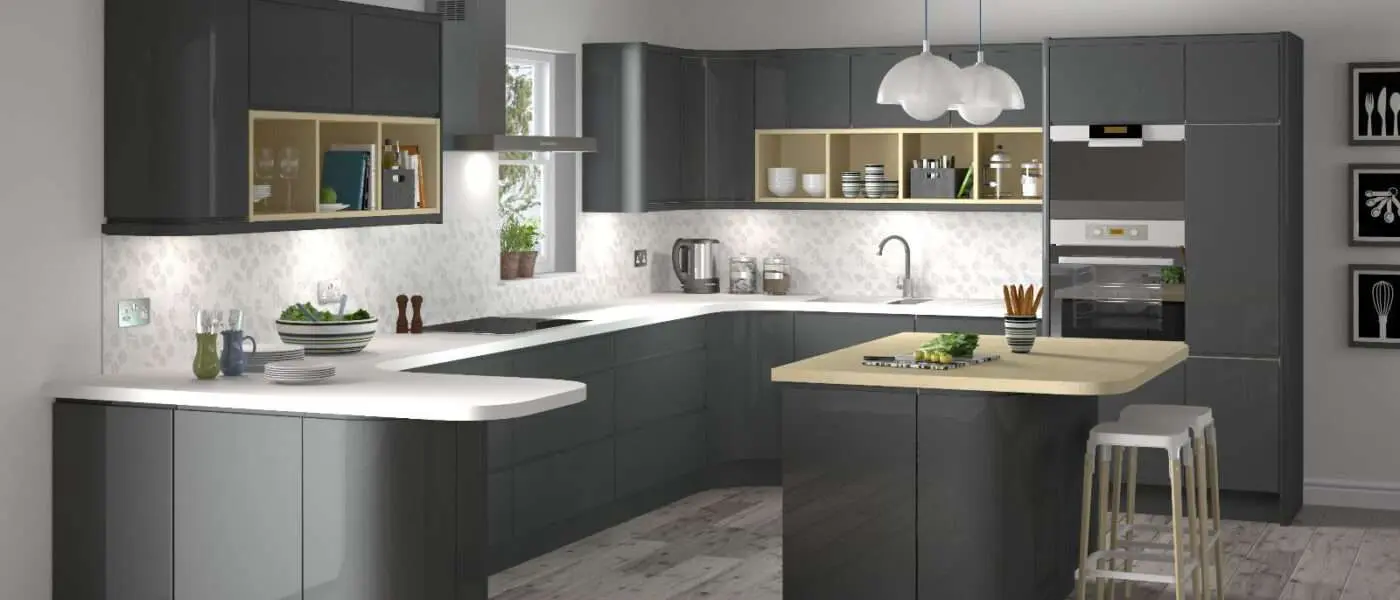
The Role of Color Harmony in your kitchen colour combination
Harmonizing Your Color Choices
Color harmony is the art of ensuring that all the colors in your kitchen blend seamlessly. To achieve this, follow these guidelines:
The 60-30-10 Rule
This rule suggests using your primary color for 60% of the space (usually the walls and major furniture pieces), the secondary color for 30% (cabinets and countertops), and the accent color for the remaining 10% (accessories and small details). This distribution creates a balanced and visually appealing look.
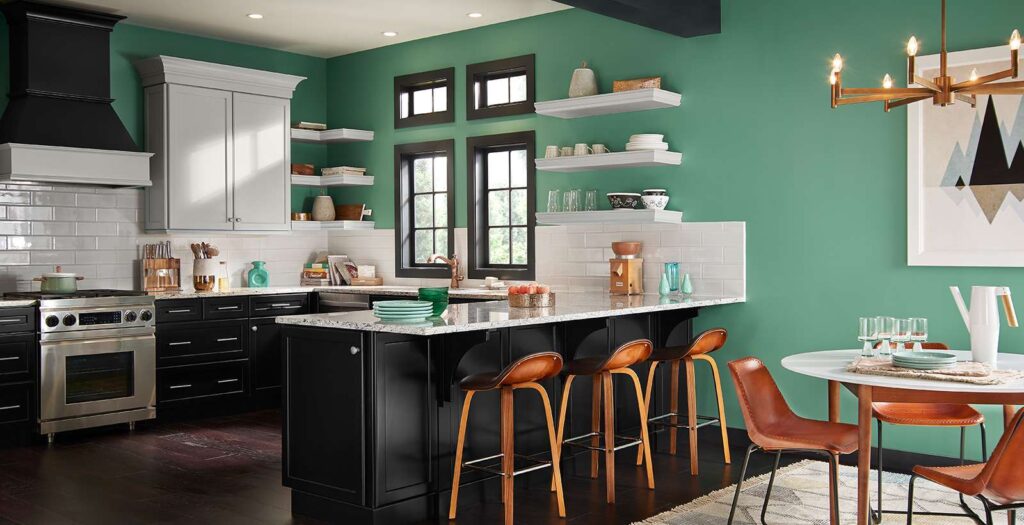
Complementary Colors
Consider using complementary colors-those opposite each other on the color wheel-to create contrast and visual interest. For instance, if your cabinets are a shade of blue, choose warm orange or gold accents to create a lively balance. or cabinets are black, choose green.

Staying Timeless with the Right kitchen colour combination
Avoiding Fads and Trends
While it can be tempting to follow the latest design trends, keep in mind that kitchen renovations are a significant investment. To ensure your kitchen’s longevity, opt for a color scheme that has timeless appeal. Neutral colors like whites, grays, and soft blues are less likely to go out of style and provide a blank canvas for changing decor elements.
Flexibility for Future Updates
Choose a color combination that allows for easy updates. Over time, your taste may evolve, and you might want to refresh your kitchen without a complete overhaul. Selecting versatile colors for cabinets and wall paint can make it easier to adapt to new trends and styles.
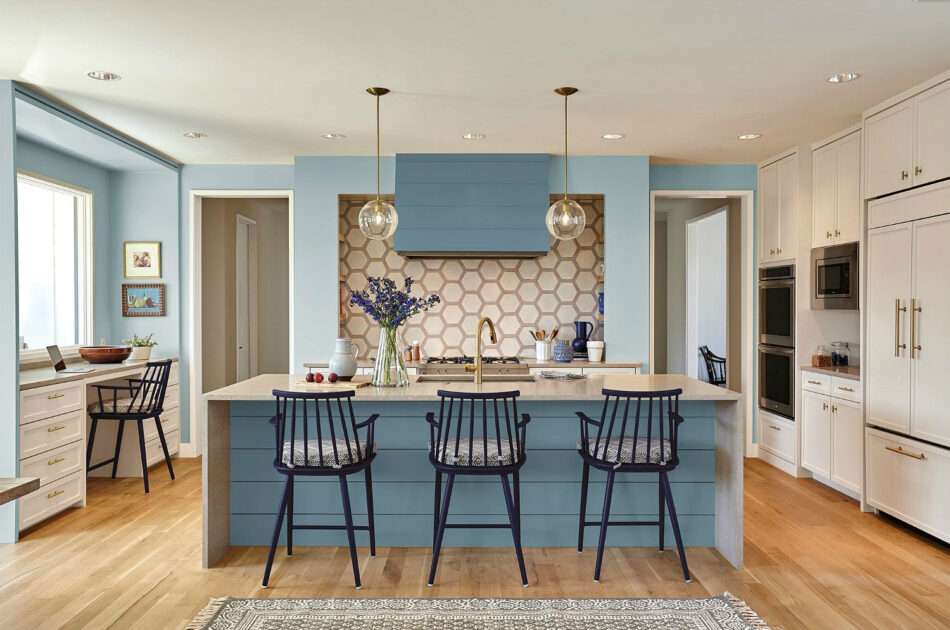
Budget-Friendly Color Options
Achieving Great Looks without Breaking the Bank
You don’t need to spend a fortune to achieve a stunning kitchen color combination. Here are some budget-friendly options to consider:
Repainting Cabinets
If you’re on a tight budget, repainting your existing cabinets can work wonders. A fresh coat of paint can breathe new life into your kitchen without the expense of replacing cabinets entirely. Choose a color that complements your desired wall paint for a cohesive look.
Open Shelving
Consider open shelving in lieu of upper cabinets. This can reduce the cost of cabinetry and allow you to showcase your dishware and colorful accessories as part of your kitchen’s color scheme.
DIY Backsplash
Creating a DIY backsplash with colorful tiles or peel-and-stick options can be a cost-effective way to introduce vibrant hues into your kitchen. This project can be tackled by many homeowners with basic DIY skills.
Personalizing Your Color Scheme
Reflecting Your Lifestyle
Your kitchen should align with your lifestyle and preferences. Here are some personalized color considerations:
Family-Friendly Colors
If you have a busy household with children, consider colors that are forgiving of fingerprints and stains. Neutral and mid-tone shades can help conceal everyday wear and tear.
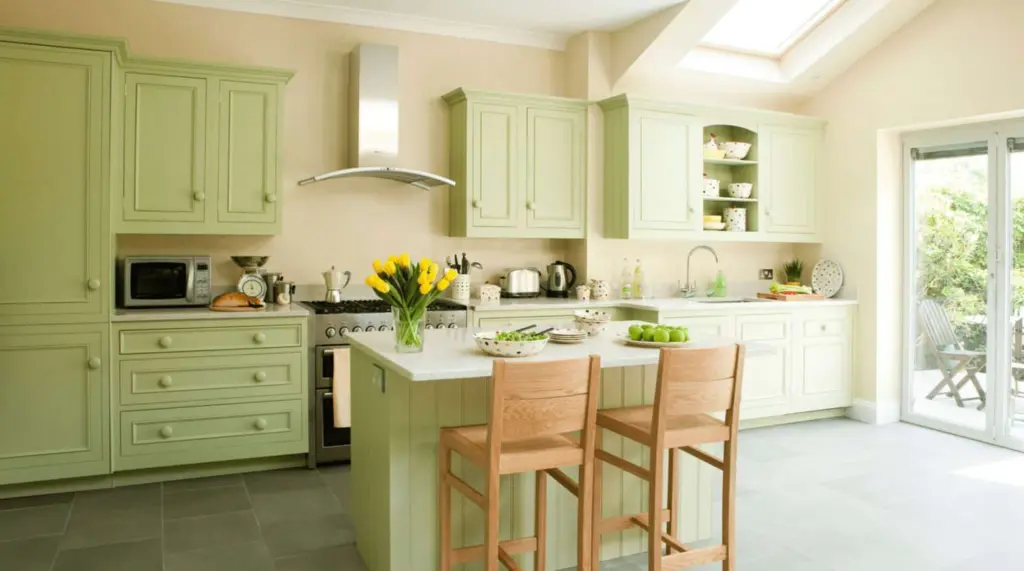
Entertainer’s Paradise
If you love hosting gatherings, opt for colors that encourage socializing. Warm, inviting tones can make your kitchen a welcoming space for friends and family to gather and enjoy delicious meals together.
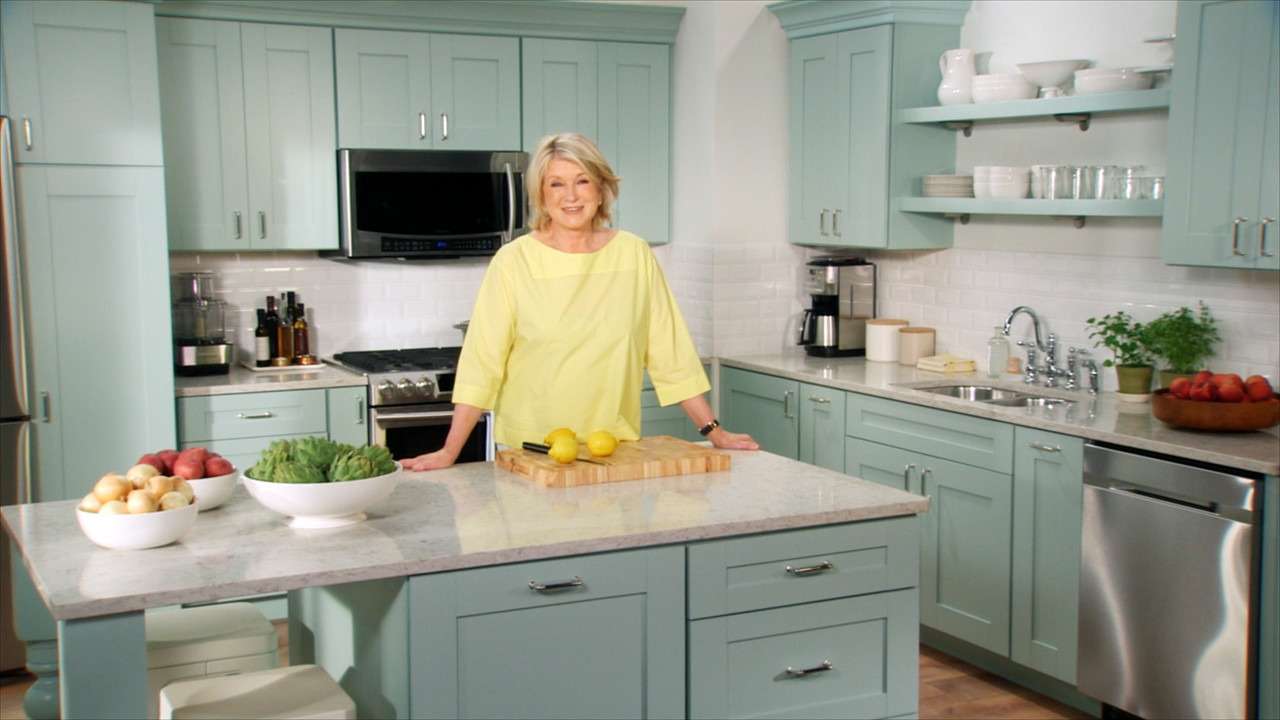
Culinary Inspiration
For those who are passionate about cooking, choose colors that inspire creativity. Vibrant, bold colors can stimulate your culinary senses and make cooking a joyous experience.
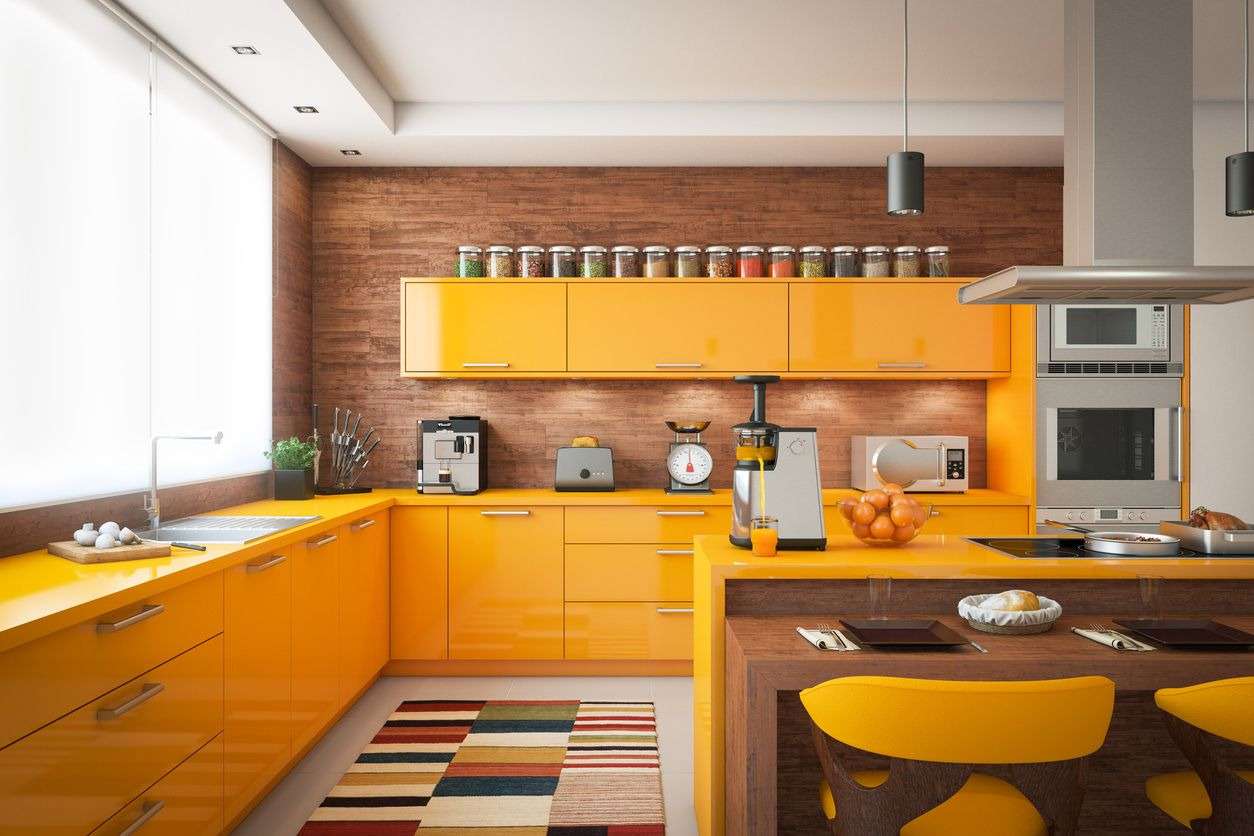
Seeking Professional Advice
Expert Consultation
While there’s a lot you can do on your own, sometimes it’s beneficial to seek professional advice:
Interior Designers
Interior designers can provide valuable insights into color selection, layout, and overall kitchen design. They can help you achieve a cohesive and stylish look while considering functionality.
Color Consultants
Color consultants specialize in choosing the perfect color palette for your space. They take into account factors like natural light, room size, and your personal preferences to create a customized color scheme.
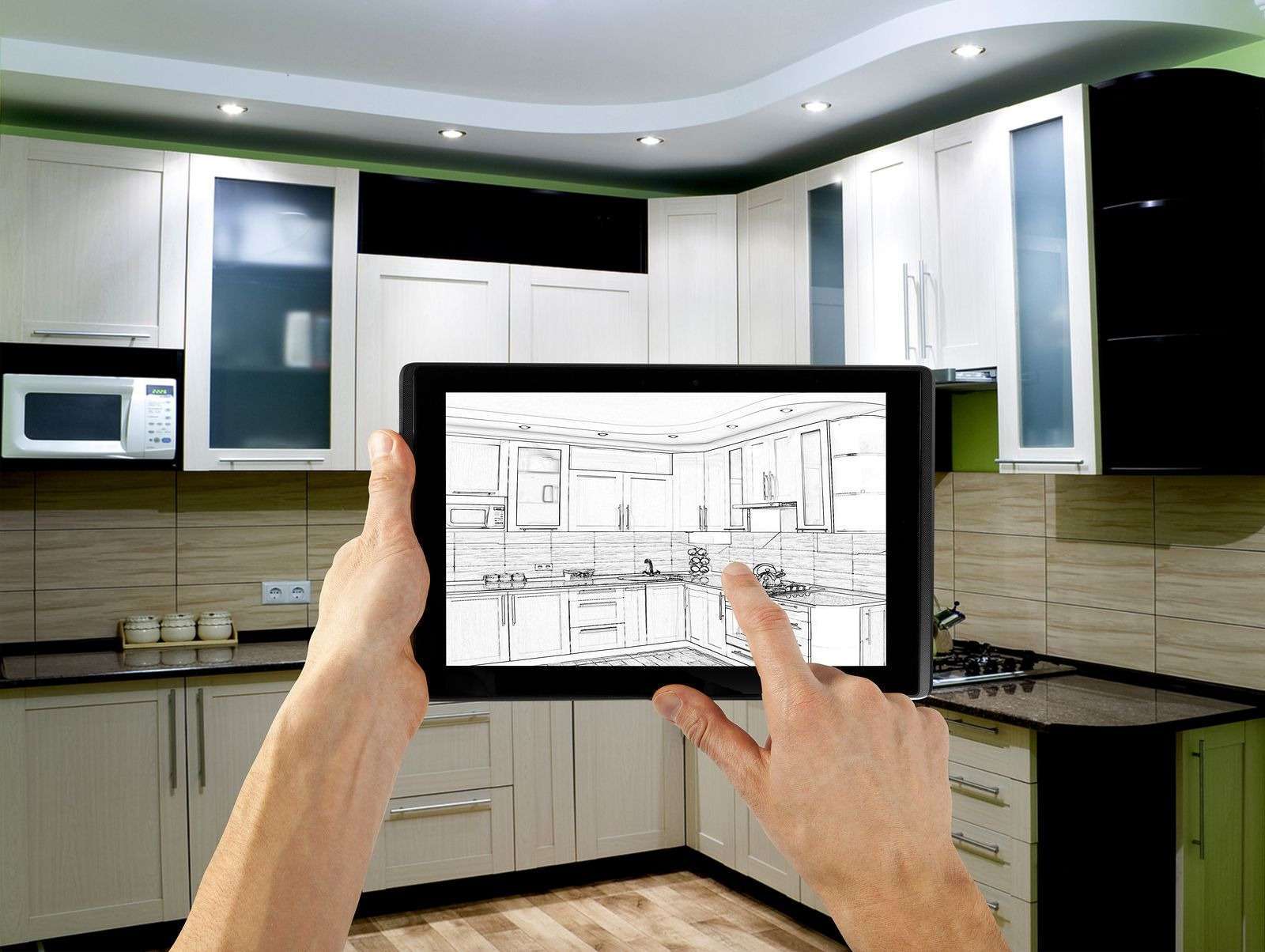
Maintenance and Durability
Practical Considerations
In addition to aesthetics, consider the practical aspects of your color choices. Kitchens are high-traffic areas that can be prone to spills and stains. Opt for durable paint finishes that are easy to clean and maintain. Matte paints, for example, can hide imperfections but may be less resistant to stains than semi-gloss or satin finishes.
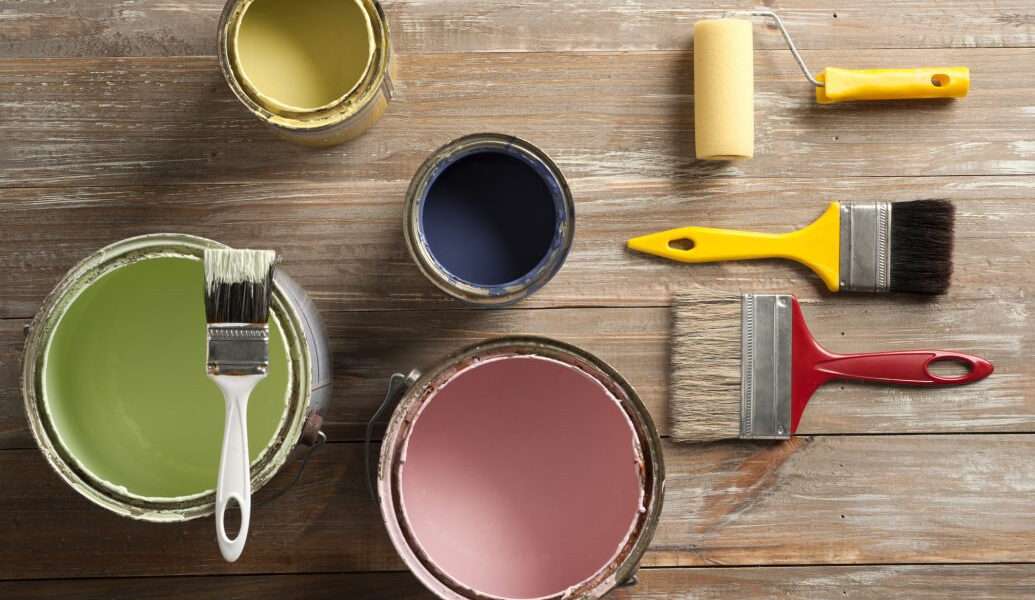
In conclusion, selecting the perfect color combination for your wall paint and kitchen cabinets is a significant decision in kitchen design. By understanding color psychology, finding the right balance, and considering lighting and personal style, you can create a kitchen that is not only visually appealing but also functional and inviting.
Remember that your kitchen should be a space where you enjoy spending time, whether it’s cooking, entertaining, or simply relaxing with a cup of coffee. So, take your time, experiment, and have fun exploring the myriad possibilities of color. With the right color combination, your kitchen can truly become the heart of your home.
FAQs
Q:Should I always choose contrasting colors for my cabinets and wall paint?
A: Not necessarily. While contrasting colors can create a bold look, harmonious color combinations can be equally appealing. It depends on your personal style and the atmosphere you want to create.
Q:Can I mix different materials for my cabinets and still have a cohesive color scheme?
A:Yes, mixing materials is possible. Just ensure that the colors harmonize, and the overall design maintains a sense of unity.
Q:What if I want to add a pop of color to my kitchen?
A:Adding a pop of color through accessories, such as colorful dishes or decorative items, is an excellent way to infuse vibrancy into your kitchen without overwhelming the space.
Q:Should I follow kitchen design trends when choosing colors?
A:While trends can be a source of inspiration, it’s essential to prioritize your personal preferences and the functionality of your kitchen over fleeting trends.
Q:How can I make a small kitchen appear more spacious with color choices?
A:Opt for lighter colors for both the cabinets and wall paint to create a sense of openness. Mirrors and strategic lighting can also make a small kitchen feel larger.
